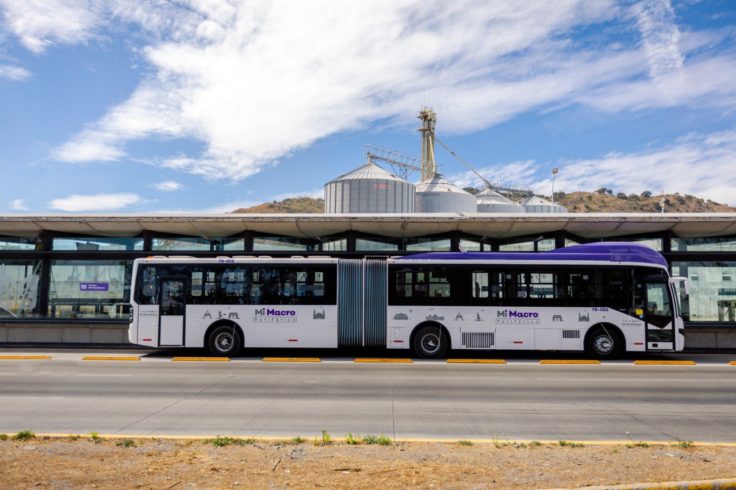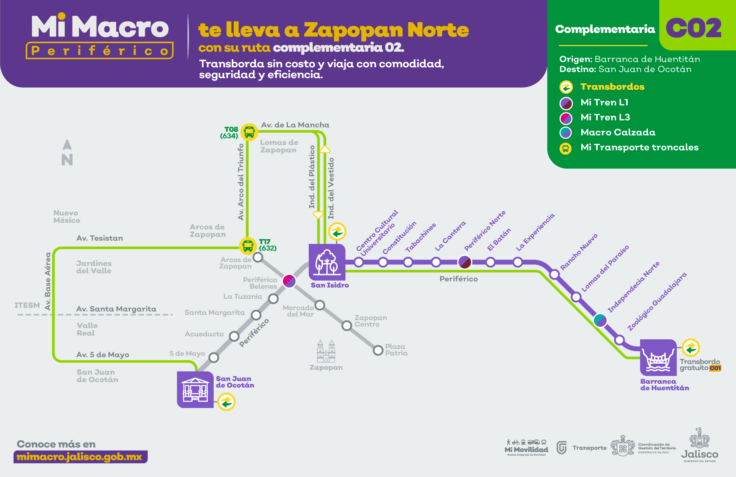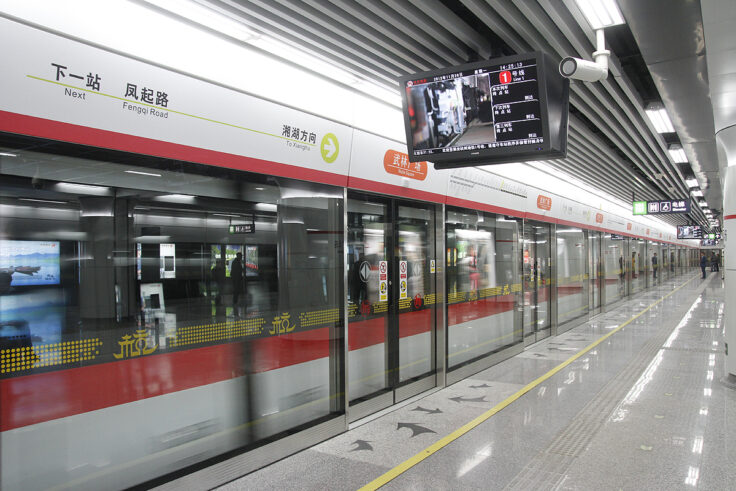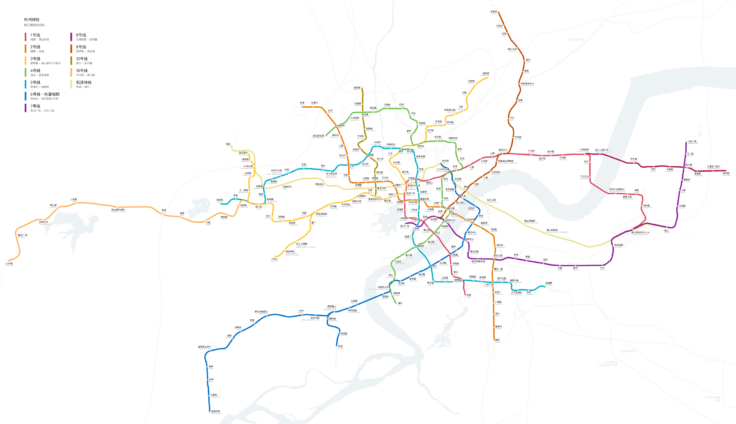August 17, 2023
How These Two Cities Implemented Robust, Well-Connected Rapid Transit Corridors
Every year, ITDP collects and updates rapid transit data for the Rapid Transit Database, which debuted in 2021. The year 2022 witnessed a remarkable 16,000-kilometer increase in rapid transit corridors worldwide.
Learn more about the 2021 launch of ITDP’s Rapid Transit Database in this press release.
Last year was full of ambitious and successful rapid public transport projects in cities around the world, proving that these systems could rebound from the effects of the COVID-19 pandemic and even reach greater heights. Two cities in particular offer encouraging evidence of these successes that other global cities can learn from and hope to replicate — Guadalajara, Mexico and Hangzhou, China.
Jalisco’s New BRT Corridor Makes Guadalajara More Accessible
In the metropolitan area of Guadalajara located in Mexico’s State of Jalisco, the region’s newest BRT corridor (Mi Macro Periférico) is not only the largest one in the country but also one that now serves more than 300,000 riders per day. Its comprehensive design of trunk routes and feeder routes attracts large numbers of riders from suburban neighborhoods, providing critical connections to more communities outside of the urban core. Mi Macro Periférico is a strong example that BRT can be as impactful in the urban periphery as it is in city centers.
Along the outskirts of Guadalajara, the corridor’s signature purple BRT stations have populated suburban roadways since January 2022. Mi Macro Periférico is a testament to the possibilities of expanding rapid transit to edge cities of a large metro area, as 42 stations form almost a full circle around the city and the nearby edge cities of Tonala, Zapopan, Tlaquepaque, and Tlajomulco.

Mi Macro Periférico has proven successful in its utilization since its debut, with a ridership reaching 32 million in the first six months of operation, almost four times the population of Jalisco itself. Just one month after the launch, the corridor attained more than 300,000 riders per day. In response to the unexpected number of riders, the Governor of Jalisco authorized the acquisition of extra buses to keep up with the ridership growth. Seven articulated trunks were added as a result, which further reduced waiting times by a reported 18 percent.
Mi Macro Periférico now outperforms its predecessor Mi Macro Calzada (the first BRT corridor in Guadalajara) in ridership. While different from Mi Macro Periférico, which operates as a ring road, Mi Macro Calzada runs a north-south route and primarily brings passengers in and out of Guadalajara. The steep difference in ridership between the two corridors sheds light on the great demand for trans-suburban travel in the region, while also identifying a need for more BRT corridors to serve the many car-dependent suburban areas of the city.
On a national level, Mi Macro Periférico’s ridership also stands unrivaled. Mexico City’s first BRT corridor that runs along the historic and extensive Avenida Insurgentes did not reach 160,000 riders per day until a year after its launch. Even compared to the TransJakarta BRT in Indonesia, Asia’s largest BRT system, Mi Macro Periférico’s ridership is already nearly half of TransJakarta’s record-breaking ridership in 2022.

The integration of various transport modes has contributed to Mi Macro Periférico’s remarkable numbers. Not only do two Mi Tren light rail lines share connecting stations with it, but 620 bicycle parking spaces were also built along the corridor to facilitate more multi-modal trips. When the COVID-19 pandemic spurred the development of nearly 15.6 kilometers of pop-up bike lanes, the selection of the area was based on transport demand data, which ultimately helped to integrate cyclists with the new BRT corridor. Other measures to increase the accessibility and walkability of BRT stations include the construction of pedestrian bridges and greening pedestrian roads.
Mi Macro Periférico is being recognized as a landmark local BRT corridor, even helping the State of Jalisco receive an Honorable Mention as part of the 2023 Sustainable Transport Award program. Its provision of BRT service to peri-urban and suburban communities sets it apart from traditional public transit services that often focus on just moving passengers from the suburbs into downtown districts. The success of this ‘suburb-oriented’ BRT proves that public transport can be effectively implemented beyond the core limits of a city and gain widespread ridership.
Hangzhou’s Rapid Transit Investments Ahead of the 2022 Asian Games
On the other side of the world last year, in the city of Hangzhou, China, a 52% increase in the city’s overall metro rail length proved that it is possible to develop rapid transit efficiently with the right mix of investments and partnerships. This expansion occurred in large part due to the city’s preparation for the 2022 Asian Games, which brought hundreds of thousands of athletes and spectators to Hangzhou in early 2023. Since the first metro corridor opened in 2012, the city has developed its metro system into one that now boasts over 340 kilometers.
Compared to other Chinese cities of similar size, Hangzhou began operating its metro system relatively late. The city’s plans to expand the system fell shy of other Chinese cities in the late 1990s and early 2000s when requesting approval from the Central Government. In the meantime, the city focused more on densifying the existing system as it redeveloped its proposal for the planned expansions. It took until 2016, when the city successfully secured the rights to host the 2022 Asian Games, for the metro expansion plans to receive approval from the Central Government to move ahead.

The approval of the Hangzhou Metro’s Phase Three Plan (2017-2022), which includes 10 metro rail construction projects, laid the foundation for a rail length boom between 2019 and 2022. In just three years, the Hangzhou Metro expanded from 130.9 kilometers to 517 kilometers. Reaching its decade milestone in 2022, the Metro added another 177 kilometers to its system in preparation for the first Asian Games since the COVID-19 pandemic. Seeking to further capitalize on the window between the 2016 G20 Conference and Games, the Hangzhou government also proposed an airport express metro line to connect the regional airport on the eastern end of the city to the downtown core, which later became known as Line 19 or the “Asian Games Line.”
Along the corridor was also situated the Asian Games Village and two commuter rail train stations that linked major transport hubs and a number of residential areas, offices, and schools to service both residents and tourists during and after the Games. Employing big data to forecast transport demand, Hangzhou officials targeted high-demand areas when they proposed new metro stations. As of February 2023, the metro system recorded an impressive 4.05 million riders, demonstrating not only the success of transport demand forecasting but also the effectiveness of developing a dense metro network that facilitates greater access and, ultimately, more multi-modal commutes.

Hangzhou Metro’s Line 5 is a standout example of a well-connected rapid transit corridor, with 11 interchange stations that support intra-urban travel while moving passengers from east to west on the northern end of the city. Besides Line 5, almost every existing corridor in the system has at least four interchange stations. Some interchanges lie outside of the city limit, helping suburban riders use the Metro for trans-suburban commutes, bringing greater convenience to residents and increasing the likelihood of people shifting from car trips. Jumping from the ninth-longest metro rail system in 2021 to the country’s fifth largest in 2022, the Metro’s exponential growth is a testament to the possibilities of rapid transit development alongside strong political will, investments, and robust data use.
Both Mi Macro Periférico and the Hangzhou Metro are recent rapid transit expansion projects that demonstrate that there is significant demand and potential for such systems around the world, particularly as transit ridership continues to recover from the 2020 pandemic. Whether it is expanding bus rapid transit corridors to the periphery of a city, or adding hundreds of kilometers of metro rail to densify a large metro area, bold decisions and smart planning can result in high ridership and public support.
Investments in rapid transit systems significantly improve road safety, congestion, air quality, and urban access by encouraging a shift from driving towards public transport use that is more efficient for people and better for the climate.
